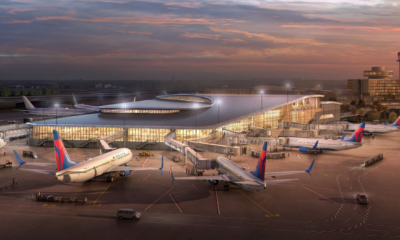Know
Flights continued as TPA endured Hurricane Debby

Tampa International Airport (TPA) faced significant flight disruptions due to Hurricane Debby; 158 flight cancellations and 156 delays accounted for approximately 30% of the airport’s daily commercial operations, causing widespread inconvenience for passengers.
Despite the substantial impact on flights, TPA did not sustain major damage. Minor flooding occurred in non-operational areas of the airfield, but the airport remained functional throughout the storm. According to a statement from the airport, the decision to stay open was based on careful planning and extensive coordination with local agencies, the Federal Aviation Administration (FAA), and the National Weather Service. “Safety is our top priority,” a spokesperson for the airport stated. “The Aviation Authority prepares for severe weather and other impactful situations throughout the year to address potential stress points in our operational plan.”
While the FAA issued a ground stop for incoming flights, causing delays in arrivals, flights from TPA were still departing. Occasional pauses in operations occurred due to heavy rain, gusty conditions and lightning. Despite these challenges, 69% of scheduled flights on Sunday were able to take off and land. FAA delay programs are expected to continue affecting air traffic across the Southeast, leading to further disruptions.
Airport staff were actively present in the Main Terminal and the Airport Operations Center to assist travelers affected by the storm. Passengers were encouraged to stay in close contact with their airlines to manage their travel plans amid the disruptions. The airport emphasized the importance of communication and readiness in such situations.
Hurricane Debby, a potent tropical system, brought heavy rain and gusty winds to the Tampa Bay area, affecting regions far beyond its center. The storm’s intensity and widespread impact underscored the need for meticulous planning and coordination in the face of tropical weather systems. “We are in the middle of what was forecast to be a busier than average hurricane season,” the spokesperson noted. “We rely on the input of our partner businesses and agencies to ensure safety and choose the best course of action in any given situation.”
The increasing frequency and intensity of tropical storms remain a concern for aviation operations in the southeastern United States.







